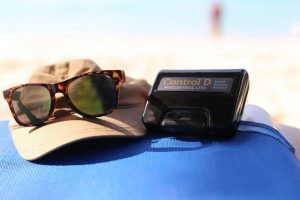Mindfulness Metrics: Tracking Student Resilience With Wearables
Mindfulness has been gaining popularity in recent years as a tool for improving mental health and well-being. It involves being fully present and aware of one’s thoughts, emotions, and surroundings. In today’s fast-paced and highly digital world, students are facing increased stress and pressure, making mindfulness even more relevant and essential. And now, with the advancements in technology, it is possible to track the impact of mindfulness on students through wearables, providing valuable insights into their level of resilience. In this article, we will explore the concept of mindfulness metrics and how it can be used to track student resilience with the help of wearables.
The Importance of Tracking Student Resilience
Resilience refers to an individual’s ability to adapt and bounce back from challenging or stressful situations. It is a crucial skill that students need to possess in order to thrive in today’s demanding academic environment. However, as a result of the increasing pressure faced by students, resilience levels are declining, which can have severe consequences on their physical and mental well-being. This is where tracking student resilience comes into play. By monitoring resilience levels, educators and parents can identify students who may be struggling and provide the necessary support and resources to help them cope better.
What are Mindfulness Metrics?
Mindfulness metrics are a set of data points that measure the impact of mindfulness practices on an individual. It includes various factors such as heart rate variability, breathing patterns, and sleep quality, among others. By tracking these metrics, we can gain valuable insights into an individual’s mental, emotional, and physical well-being, and how they are affected by their mindfulness practices.
The Role of Wearables in Tracking Mindfulness Metrics
Wearables, such as fitness trackers, smartwatches, and biofeedback devices, have gained tremendous popularity in recent years. These devices are equipped with sensors that can collect data on various metrics, making it easier to track and monitor progress. When it comes to mindfulness, wearables can be used to track metrics such as heart rate, sleep patterns, and even brainwave activity. This data can then be analyzed to determine the individual’s level of mindfulness and resilience.
How Mindfulness Metrics Help Track Student Resilience
Identifying Patterns and Triggers
With the help of mindfulness metrics, educators and parents can identify patterns and triggers that may be causing a decline in a student’s resilience. For example, if a student’s sleep quality decreases, it could be an indication of higher stress levels. By keeping track of these patterns, interventions can be implemented to help the student cope better.
Tracking Progress
Mindfulness metrics also allow for the tracking of progress over time. By regularly monitoring the data, educators and parents can see if there is any improvement in the student’s resilience levels. This can provide a sense of accomplishment and motivation for the student, encouraging them to continue their mindfulness practices.
Developing Personalized Strategies
Each student responds differently to mindfulness practices, and not all strategies may work for everyone. By tracking mindfulness metrics, educators and parents can gain a better understanding of what works best for each student and develop personalized strategies to improve their resilience levels.
Challenges and Limitations
While mindfulness metrics can provide valuable insights, it is essential to note that they should not be the sole determinant of a student’s well-being. These metrics may not always be accurate and can be influenced by external factors such as stress from other areas of life. Additionally, there may be privacy concerns when it comes to sharing this data, and it is crucial to get the student’s consent before tracking and monitoring their mindfulness metrics.
Conclusion
With the increasing stress and pressure faced by students, it is more important than ever to track their resilience levels. Mindfulness metrics, coupled with wearables, provide a powerful tool for monitoring the impact of mindfulness practices on students’ mental, emotional, and physical well-being. It can help identify areas where students may need support and aid in developing personalized strategies to improve their resilience. While there are challenges and limitations, the use of mindfulness metrics in tracking student resilience is a step towards creating a more mindful and resilient generation.











